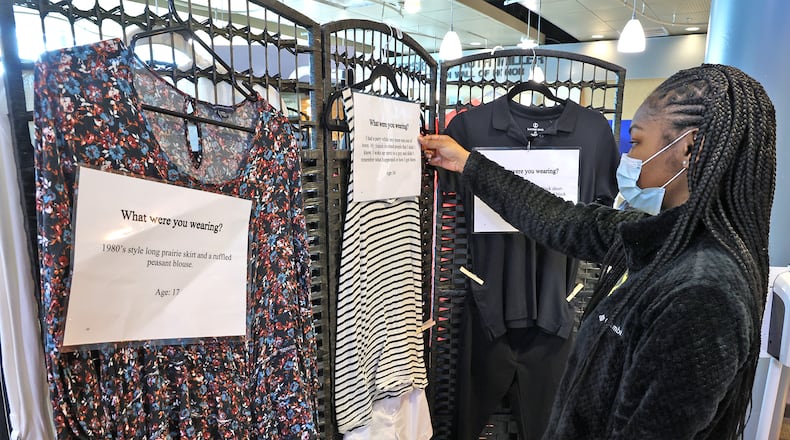“The exhibit is a powerful demonstration that what you are wearing does not welcome sexual assault,” said Emily Parsons, Project Woman Campus Advocate. She helped coordinate the exhibit, which ran from April 11-15 at Clark State.
April is Sexual Assault Awareness month. Local leaders at the area’s colleges and women’s shelter are pointing to the necessity of discussing the prevalence and impact of sexual violence in the community.
Credit: Bill Lackey
Credit: Bill Lackey
Hundreds of calls are made annually to Clark County’s law enforcement in regard to sexual violence. Last year, 109 calls related to sex crimes were made to the Clark County Sheriff’s Office, slightly down from the number of calls made in 2020: 114. More than 40 calls have been made this year so far, and the total calls are expected to outpace last year’s total, said Deputy Amanda Penewit, who works in the Intimate Partner Crime Unit of the Clark County Sheriff’s Office.
In addition, the Springfield Police Division received more than 90 calls for reports related to sexual crimes last year, according to the police division’s annual report. Between the start of the 2022 and the end of March, SPD has received 10 calls related to sexual assault.
“Knowing how often sexual assault occurs and that it’s likely happened to someone you know can change our culture and prevent future abuse from happening,” Parsons said. “It takes a community coming together and saying, ‘no more,’ and doing something when you see something that’s not right, to really make a change.”
According to the Rape, Abuse, Incest National Network (RAINN), one out of every six American woman has been the victim of an attempted or completed rape in their lifetime, and one out of every 10 rape victims are men.
Younger people are at a higher risk of sexual violence, with more than 50% of reported sexual assault occurring among people aged 18-34, according to RAINN. In addition, sexual assault on college campuses is pervasive. Among undergraduate students nationally, more than 26% of females and nearly 7% of males experience rape or sexual assault.
Melinda Van Noord, Clark State’s counseling coordinator, said that national statistics both nod to the importance of focusing programming on young adults and confirm the issue is “widespread.”
The college designated April 20 as “Survivors Day,” and campus members are encouraged to wear teal – the color for sexual assault awareness.
Credit: Bill Lackey
Credit: Bill Lackey
Resources for survivors of sexual violence exist in Clark County. The area’s colleges offer confidential counseling services for students. Project Woman, too, offers immediate advocacy services for survivors.
The Clark County Sheriff’s Office can also connect people to its intimate partner crime unit, which operates in partnership with Project Woman.
Penewit said the unit works with people to find shelter, contact victim advocates, file protection orders, and act as a support system in every step of the process.
“It’s about getting out of the horrible situations they’re in and getting them off to a better start,” she said.
Project Woman executive director Laura Baxter said that the topic of sexual assault is “uncomfortable” to discuss, but having an intentional space to discuss it is essential to the community.
“People prefer to think that we are ‘beyond this’ in 2022,” Baxter said, “but the truth is that there are still many stereotypes and myths about sexual assault, dating violence, rape and stalking that cause shame and blaming of those who are victims of this crime.”
She said Project Woman “is here” for anyone who has experienced sexual assault.
“A person who chooses to rape is responsible for this act,” said Baxter. “The victim is not responsible – regardless of any other factor – not what they were wearing, not where they were walking, not what time of day it is. To stop rape, rapists must stop raping.”
Panels from the “What Were Your Wearing?” exhibit will be on display again during Project Woman’s Purple Ribbon Award Celebration on April 27 from 4-5:30 p.m. at the Courtyard by Marriott.
For more information on services, Project Woman can be contacted at 937-328-5308.
By the Numbers:
- 1 in 6 American women has been the victim of an attempted or completed rape
- 1 out of every 10 victims of rape are men
- More than 50% of sexual assault occurs among people aged 18-34
Data source: RAINN
About the Author



